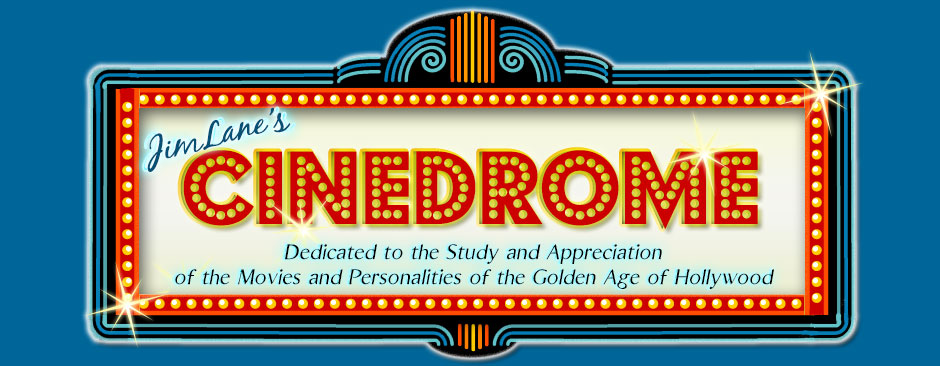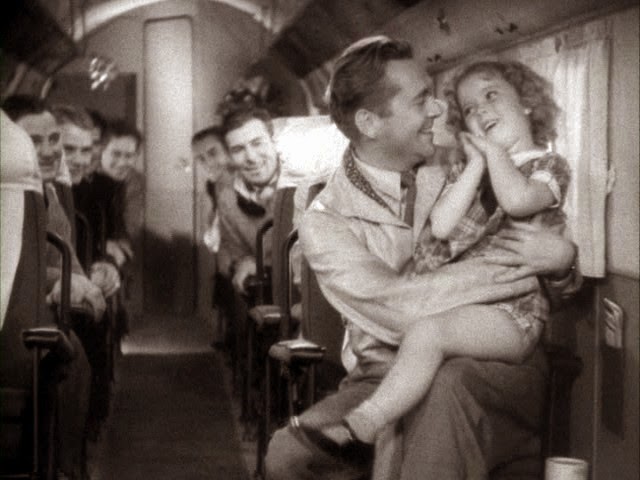Shirley Temple Revisited, Part 4
According to the IMDb, Now and Forever‘s U.S. release date was August 31, 1934. However, it wasn’t reviewed by the New York Times or Variety until October 13 and 16, respectively. Apparently, either Fox sent the picture off to down-market engagements two-and-a-half months before opening it in New York — or (more likely, I think) the IMDb has the date wrong.
Whatever the case, both Andre Sennwald in the Times and Abel Green (again) in Variety pegged Shirley as Now and Forever‘s saving grace. Sennwald:
The little girl has lost none of her obvious delight in her work during her rise to fame. In “Now and Forever” she is, if possible, even more devastating in her unspoiled freshness of manner than she has been in the past…With Shirley’s assistance [the photoplay] becomes, despite its violent assaults upon the spectator’s credulity, a pleasant enough entertainment.
And Green:
“Now and Forever” is a remote title; it strains credulity; it can’t stand analysis; it has sundry other technical and plausibility shortcomings — but it has Shirley Temple and that virtually underwrites it for boxoffice…Shirley Temple in “Uncle Tom’s Cabin” would probably click just as well.
In these reviews, both written by seasoned showbiz observers, the subtext is unmistakeable: Shirley Temple saves the show; Gary Cooper and Carole Lombard do their best, but without Shirley they’d have gone down with the ship. And Shirley is still only six years old.
Next it was back home to Fox for…
Bright Eyes
(released December 20, 1934)
 As bad as the Smythes are, they’re not the worst of it. That would be their daughter Joy (Jane Withers), a screaming little monster in a perpetual state of tantrum, and the most misnamed child in the history of human life on Earth.
As bad as the Smythes are, they’re not the worst of it. That would be their daughter Joy (Jane Withers), a screaming little monster in a perpetual state of tantrum, and the most misnamed child in the history of human life on Earth.
In real life, eight-year-old Jane was nothing like the character she played. Bright Eyes was her big break after a handful of uncredited bits since 1932. Fox quickly signed her to a seven-year contract and she went on to become a star in her own right, though inevitably in Shirley’s shadow, especially since they worked for the same studio. The two girls never worked together again — which is a pity, because Jane was the perfect foil for her younger co-star, and in Bright Eyes she comes as close as anybody ever did to stealing a show from Shirley Temple. Playing an obnoxious, spoiled-rotten brat, Jane was genuinely funny — no small achievement when you consider how many child actors over the years have tried to be funny, only to come off looking like obnoxious, spoiled-rotten brats.
Jane continued acting into her early 20s, even after 20th Century Fox dropped her in 1942, then she retired from the screen in favor of marriage to a rich Texas oil man. That foundered after eight years, and Jane made a comeback as a character actress in George Stevens’s Giant in 1956. Thereafter, she stayed busy in movies and on TV, and she became familiar to millions of baby boomers as Josephine the Plumber in a series of commercials for Comet Cleanser in the 1960s and ’70s. As of this writing Jane Withers is still with us, and hopefully in good health and spirits. Continued long life to her.
* * *
In a nutshell — and not counting five shorts and bit roles under her old contract to Jack Hays, or the two walk-ons in Change of Heart and Now I’ll Tell — Shirley Temple’s output for 1934 consisted of a breakthrough debut in Stand Up and Cheer!, a confirming star turn in Little Miss Marker, a placeholding appearance in Baby Take a Bow, credit for the save in Now and Forever, and a tailor-made vehicle in Bright Eyes. A great year for any rising star, and unprecedented for one who turned six midway through it.
In Child Star Shirley remembers that when Oscar nominations for 1934 were announced, “a vicious cat fight had erupted. My name was on the nomination list and odds-makers had me an almost certainty to win.” She goes on to assert that a storm of protest arose over the Academy’s failure to nominate either Myrna Loy for The Thin Man or Bette Davis for Of Human Bondage, and that as a result her own nomination was rescinded and voting rules changed to allow for write-ins. I’ve been unable to find this confirmed anywhere else, and I suspect Shirley’s memory was playing her false. She doesn’t say which picture she believed she had been nominated for (if they’d had supporting awards in ’34, she might have been a cinch to win for Little Miss Marker, but those categories were still two years in the future). Shirley is right, however, about the write-ins and the protest — though the storm was more on behalf of Davis than Loy (in the end, the award went to Claudette Colbert for It Happened One Night; Davis, even with the write-ins, came in third).
Be that as it may, there was no ignoring Shirley’s meteoric rise to the top tier of box-office stars, and the Academy Board of Governors conferred a new award, a miniature statuette “in grateful recognition of her outstanding contribution to screen entertainment during the year”. The emcee at that year’s awards was the prolific Kentucky humorist, author and columnist Irvin S. Cobb (shown here with Shirley), one of those writers whose fame more or less died when he did in 1944. Most of his 60-plus books and 300 short stories are out of print now, and he is probably best remembered for what he said that night. First: “There was one great towering figure in the cinema game, one artiste among artistes, one giant among the troupers, whose monumental, stupendous and elephantine work deserved special mention…Is Shirley Temple in the house?” Then, after Shirley joined him at the podium: “Listen, y’all ain’t old enough to know what this is all about. But honey, I want to tell you that when Santa Claus wrapped y’all up in a package and dropped you down Creation’s chimney, he brought the loveliest Christmas present that was ever given to the world.”
In Child Star, even 50-plus years on, Shirley’s disappointment still sounds tender to the touch (“If mine was really a commendable job done, why not a big Oscar like everyone else’s?”), but I think she overlooks the specialness of her special award (the only one given that year). The miniature Oscar that was created just for her would remain the standard recognition for outstanding juvenile performers for the next 26 years, and would be given 11 more times. The last went to Hayley Mills for Pollyanna in 1960; after that, beginning with nine-year-old Mary Badham for To Kill a Mockingbird in 1962, the kids would have to take their chances with the grownups (and some — Patty Duke, Tatum O’Neal, Anna Paquin — would even win). Of those dozen miniature-Oscar winners — who include Mickey Rooney, Deanna Durbin, Judy Garland, Margaret O’Brien and others — the little girl who inspired the creation of it was the youngest to receive it. In fact, she remains to this day the youngest person ever to win anything from the Academy of Motion Picture Arts and Sciences. I doubt if that record will ever be broken.





A few months ago my daughter and I watched "Bright Eyes". I was watching it on my own, but the offspring came upon a scene with Jane Withers and was hooked. However, in family lore I'm sure it will become one of those movies that I "made her watch".
I can't believe what a busy kid she was! I'm not sure I've worked that much – ever – in my entire life!
We watched "Bright Eyes" the other day and fell in love with Shirley Temple all over again. How could so much charm and talent and cuteness be possible in one tiny package?